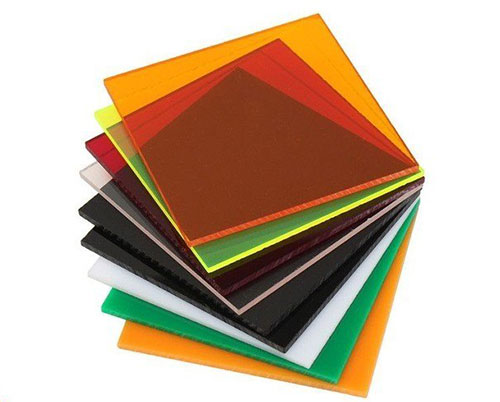
Acrylic sheets, also known as polymethyl methacrylate (PMMA) or organic glass, are versatile plastic materials that are highly valued for their excellent clarity, lightweight nature, and impact resistance. These properties make them ideal for a wide range of applications, from architectural uses to display solutions, automotive parts, and more.
One of the standout characteristics of acrylic is its remarkable transparency, which rivals glass while being significantly lighter and more durable. Unlike traditional glass, acrylic is not prone to shattering or breaking easily. It also provides better insulation and UV resistance, making it a durable option for both indoor and outdoor applications.
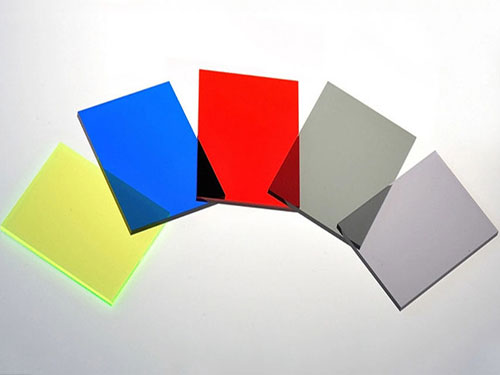
Acrylic sheets are used across various industries. In the construction sector, acrylic sheets are commonly used for windows, facades, and interior partitions. Meanwhile, in advertising and retail, they serve as signage, displays, and point-of-purchase materials. Additionally, the automotive and aerospace industries rely on acrylic for lenses, light covers, and even cockpit windows.
When purchasing acrylic sheets, understanding their available sizes and pricing is crucial for consumers and industry buyers alike. The size, thickness, and type of acrylic sheet will significantly influence the cost, and choosing the right combination can help achieve the best balance of performance and price. In this article, we will explore the common sizes, thicknesses, price ranges, and factors affecting acrylic sheet pricing to help you make an informed decision for your next project.
Acrylic sheets come in various sizes, both standard and custom, to accommodate the wide range of projects they are used for. The size of the acrylic sheet you select will depend on the specific requirements of your application. Standard sizes are typically more cost-effective, while custom sizes offer flexibility but may come at a higher price.
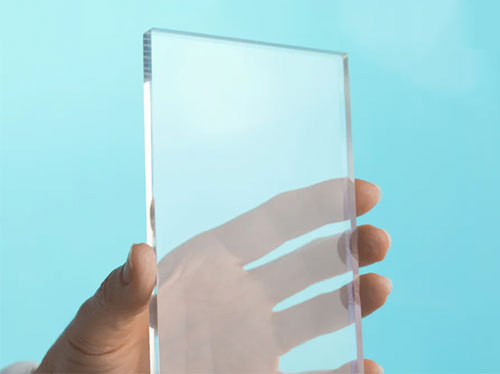
4×8 Feet (1220mm x 2440mm)
The 4×8-foot size is one of the most common and widely available dimensions for acrylic sheets. It is ideal for large-scale projects and can be used for windows, large displays, and panels. This size is perfect for construction, signage, and display solutions.
Applications: Wall panels, signage, window coverings, display boards, and advertising.
4×6 Feet (1220mm x 1830mm)
This size is slightly smaller than the 4×8-foot option and is often used for medium-sized projects where the full 4×8 sheet might be excessive. It provides enough area for smaller signs, displays, and window applications without the waste associated with larger sheets.
Applications: Small display panels, windows, signage, and protective covers.
4×10 Feet (1220mm x 3050mm)
The 4×10-foot acrylic sheet is ideal for larger applications that require larger single panels. It reduces the need for joining multiple sheets and is typically used in large signage or facade applications.
Applications: Large-scale outdoor signage, building facades, and large display panels.
5×8 Feet (1525mm x 2440mm)
This size offers a slight increase in width compared to the standard 4×8, making it suitable for projects that require a bit more coverage but don’t necessarily need the larger 4×10 sheets. It is often used in projects that require less cutting or fewer seams.
Applications: Architectural facades, larger window covers, and display cases.
6×8 Feet (1830mm x 2440mm)
For larger applications that need a more expansive area but still require a manageable sheet size, the 6×8 feet acrylic sheet is a common choice. It’s often used in large window installations, protective barriers, and exhibition stands.
Applications: Window installations, large protective shields, and displays for exhibitions.
6×10 Feet (1830mm x 3050mm)
This larger sheet is suitable for projects where you want to minimize the number of seams or joints. It is ideal for large, custom-built displays, architectural elements, or facades that require long, uninterrupted panels of acrylic.
Applications: Building facades, signage, and large custom display cases.
Many suppliers also offer custom-cut acrylic sheets to fit specific requirements. Custom sizes are particularly useful for projects that need unique dimensions, and they allow for a more tailored approach, especially for applications like custom windows, display cases, or decorative elements.
Applications: Custom-sized windows, signage, and bespoke display solutions.

Smaller Sheets (e.g., 2×4 Feet or 3×4 Feet)
Smaller acrylic sheets are often used for more detailed applications where precision and smaller cuts are required. These sizes can be ideal for DIY projects, small signage, and arts & crafts applications. They can also serve as protective covers or small display cases.
Applications: Small signage, framing, and creative projects.
Oversized Sheets (e.g., 8×10 Feet, 8×12 Feet)
Oversized acrylic sheets are available for extremely large-scale applications. These dimensions are particularly useful in the construction of large-scale architectural features, custom-designed facades, or extensive display panels. They can save on material costs by reducing the need for multiple cuts and seams.
Applications: Custom facades, large-scale wall cladding, and expansive display panels.
When selecting the size of your acrylic sheet, it’s important to consider the scope of your project. Larger sheets can help reduce seams or joints in applications like display panels or facades, which improves both aesthetics and structural integrity. On the other hand, smaller sheets or custom cuts may be better suited for specialized applications or smaller installations. If you need multiple sheets for a larger installation, it may be more cost-effective to purchase larger panels and cut them to size, especially if you can avoid additional processing fees. Always make sure to measure the area where the acrylic will be used to ensure that the selected size will fit properly.
The thickness of acrylic sheets plays a crucial role in determining their strength, durability, and suitability for specific applications. Thicker sheets provide more durability and strength, while thinner sheets are lighter and more cost-effective for certain uses. Below, we explore the most common thicknesses of acrylic sheets and their best uses.
Characteristics: At 3mm thick, acrylic sheets are lightweight and flexible, with moderate impact resistance. They are commonly used in applications where strength is not a primary concern but transparency and aesthetic value are.
Applications:
Characteristics: 4mm thick sheets offer a good balance between strength and flexibility. They are widely used in both residential and commercial applications and provide sufficient durability for mid-range strength needs.
Applications:
Characteristics: These thicknesses provide higher impact resistance and durability, making them suitable for applications that require more strength. The 5mm and 6mm sheets are often used for medium to large displays and larger structural elements.
Applications:
Characteristics: These are the thickest acrylic sheets available and provide excellent strength and durability. They are used in applications where acrylic must endure substantial impact or where additional structural support is required.
Applications:
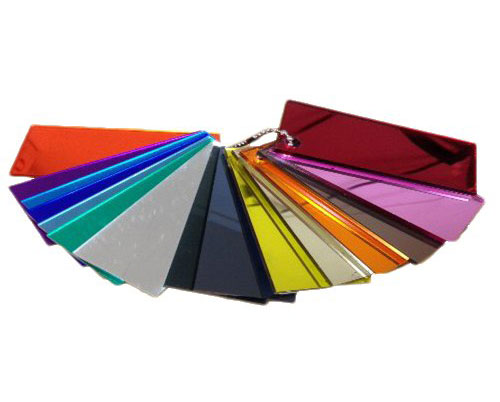
When selecting acrylic sheet thickness, consider the environmental conditions and strength requirements of your project. Thicker acrylic sheets are better for applications where durability and impact resistance are crucial, such as in outdoor signage or structural installations. Thinner sheets are suitable for decorative and lightweight applications where the primary goal is aesthetics rather than strength.
Acrylic sheet prices vary widely depending on several factors, including thickness, size, color, and the manufacturing process. Understanding these price ranges will help buyers make informed decisions based on their budgets and project needs.
| Thickness | Price Range (per square foot) |
|---|---|
| 3mm Acrylic Sheets | Typically, 3mm acrylic sheets are the most affordable, with prices ranging from $0.23 to $2 per square foot, depending on the quality and supplier. |
| 4mm to 6mm Acrylic Sheets | Prices for these mid-range thicknesses generally range from $0.63 to $1.39 per square foot. They offer a good balance between cost and strength, making them suitable for various applications. |
| 8mm to 12mm Acrylic Sheets | Thicker acrylic sheets like 8mm to 12mm typically cost between $1.04 and $2.13 per square foot. The price increases due to the greater strength and durability offered by these sheets. |
Clear acrylic sheets are generally more expensive than colored or frosted versions due to the higher quality of the material and the manufacturing process required to achieve the desired transparency. Colored acrylic sheets, while still durable, tend to cost less as they involve additional pigments during production.
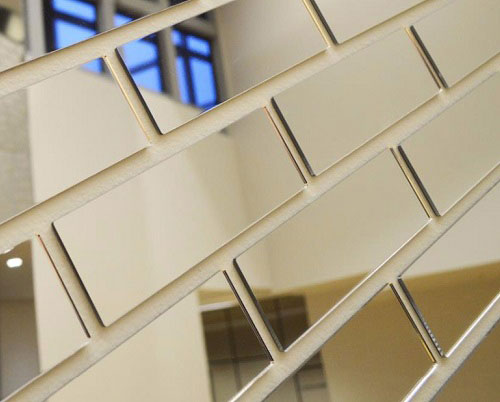
Several factors can influence the price of acrylic sheets, and it’s essential to understand these variables when making a purchase.
Higher-quality acrylic sheets, often produced by well-known manufacturers, tend to cost more. These acrylic sheets are made from higher-grade materials that offer better clarity, consistency, and durability.
Market fluctuations, material shortages, and changes in manufacturing costs can impact acrylic sheet prices. Prices may vary depending on current market conditions and the volume of demand.
Custom sizes, special cutting, surface treatment, and other additional processes can significantly increase the cost of acrylic sheets. Customization often adds value but also adds to the overall price.
Purchasing in bulk can result in significant discounts. Suppliers often offer lower per-unit prices for larger orders, making it more cost-effective for businesses or large-scale projects.
When selecting acrylic sheets, it’s essential to match the size and thickness to the specific needs of your project. Balancing price with performance will ensure that you get the best value for your investment.
Consider the strength, transparency, and durability requirements of your application. Thicker sheets offer more durability, while thinner sheets can be more economical for decorative uses.
Acrylic sheets come in a wide range of prices, so it’s important to find the right balance between your budget and the required features of the sheet. For high-end applications, it may be worth investing in premium sheets, but for budget-conscious projects, mid-range options may suffice.

In summary, understanding the dimensions, thicknesses, and pricing of acrylic sheets is essential for selecting the right material for your project. By considering factors like application, strength requirements, and budget, you can make an informed decision that balances quality and cost-effectiveness.
When purchasing acrylic sheets, consider working with reputable suppliers, particularly those who offer both standard and custom sizes, to ensure that you get the best quality for your needs. Always compare prices from multiple vendors and check for bulk discounts if you are purchasing for a large-scale project.
By taking these factors into account, you can select the ideal acrylic sheet that meets your requirements and offers the best value for your investment.
If you are looking for bulk purchases or for a specific industry, please contact us. As a professional acrylic sheet manufacturer, Polyflute is committed to providing customers with high-quality customized solutions. Whether it is standard size or special customization, we can provide tailor-made products according to your specific needs and ensure competitive prices. Please feel free to contact us and we will help you find the most suitable acrylic sheet to meet your project needs.
